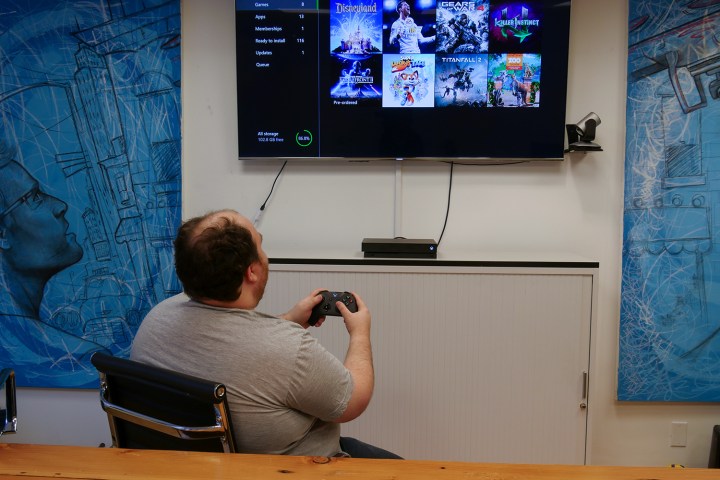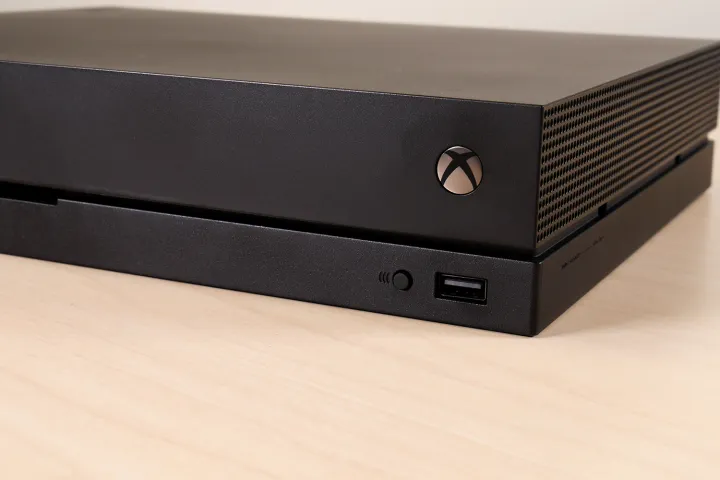
If you happen to be the proud new owner of an Xbox One S or an Xbox One X, you are probably salivating at the thought of gorgeous, color-laden HDR graphics adorning your TV screen (that is, assuming you’ve got a 4K HDR television).
Getting all set up to make that happen is a little more complex than you might expect, though. To properly activate HDR — High Dynamic Range — you need to check (and potentially adjust) the settings on both your console and your television, and of course, you need to be playing a supported title. With that in mind, we have thrown together a quick-hit guide on how to get gaming in HDR on the Xbox One.
A note before we begin: If you’re rocking an original Xbox One — not the One S or the One X — please note that it doesn’t support HDR or 4K playback. The same goes for anyone without an HDR-enabled TV. Until you have the proper hardware, you won’t be able to drench your display in vibrant HDR contrast and color shades. If you’re a PlayStation 4 owner head here for our guide to enable HDR on your PS4 and PS4 Pro.
Setting up your television
The Xbox One S and One X will auto-detect your TV’s 4K and/or HDR capabilities, but only if your TV is set up correctly beforehand. With that in mind, let’s get your TV set up correctly first.
This process may seem a little tricky at first, as not every TV works the exact same way. Depending on what brand you have, the menus might have slightly different layouts and category names, Don’t panic! We outline the basics here, so you should be able to figure it all out on your own.
- Make sure your console is connected to an HDMI 2.0a/HDCP 2.2-compliant port on your TV. You might think that because your TV is 4K/HDR all ports would be usable, but in most cases, only one or two ports are HDMI 2.0a/HDCP 2.2-enabled. What is more surprising is that the compatible HDMI port you need is not necessarily HDMI 1. Sometimes TV manufacturers label the ports so you know by looking, but even those labels can be misleading. To be absolutely sure, check out the specs section for your TV’s model at the manufacturer’s website to determine which HDMI ports support HDMI 2.0a, and use one of those for your console.
- Open your TV’s settings menu. Head to the picture settings section, then look at the presets to find your TV’s “game mode.” This mode will reduce picture processing, and your picture quality may appear to take a slight hit in the process (we’ll be fixing that, too), but it will also reduce input lag, so if you’re a competitive gamer, make sure Game Mode is chosen to preserve your connection in multiplayer matchups. If you typically play single-player games (or if you value graphics over performance), go ahead and pick whichever preset suits your eyeballs best — we typically prefer “movie,” “cinema,” or “standard” modes.
- Next, you need to enable HDR on your television. Go back to the picture settings menu. From here, it depends on what type of TV you have. Some televisions have HDR settings right in the main picture settings menu while others will list them under “input settings” “advanced picture settings,” or even the main options menu. You’re looking for a setting like “HDMI HDR,” “HDMI Color Subsampling,” “HDMI HD Ultra Deep Color,” “HDMI UHD Color,” “10-Bit Color,” or something similar. You need to enable this setting (aka switch it to “on”) for the HDMI port where the console is plugged in. If you’re not sure where to locate your TV’s HDMI HDR settings, consult your user manual or check the manufacturer’s website.
- Your TV is now set up to accept HDR content from your game console, but you may want to fine-tune the picture quality. We suggest adjusting brightness and contrast controls to taste, but before you start tweaking these settings, you want your TV to be displaying some kind of HDR content. This could be an HDR game for your console, or a movie or TV title in HDR via Netflix, Amazon, or Vudu. Once you’re playing HDR content of some sort (many TVs confirm this by putting an HDR logo on the screen), go into the picture settings to make adjustments. You will notice that your TV is in an HDR picture mode. By making adjustments while in this mode, you are adjusting picture quality only for the TV’s HDR mode — this will not impact picture quality settings for those times you are watching SDR content, be that a non-HDR movie on Netflix, a standard Blu-ray disc, or good ol’ over-the-air broadcasts.
In the market for a new TV? We can help! Take a look at our picks for the best TVs of 2017 or hit up our 4K TV buying guide for more info.
Setting up your Xbox
Note: Both the Xbox One S and the Xbox One X should automatically enable HDR if they detect a compatible television via HDMI (though this requires that your TV is set up correctly beforehand.) That said, we’re still going to show you how to do it just in case you connected your console before setting up your TV properly.
- Head to the Settings menu on your Xbox (the interface is identical, regardless of console variant), then to Display & Sound. Once there, you want to navigate to Video Output, then Advanced Video Settings. You should see boxes for “Allow 4K” and “Allow HDR.” Make sure both of those boxes are checked.
In case you want a more active tutorial, check out this video from the official Xbox YouTube account.
Playing the right games
Of course, not all games are optimized for HDR playback. For your convenience, we have a full list of all compatible Xbox One games. Of course, more supported titles are released fairly often (if Okami HD doesn’t support HDR, we riot), so be sure to check back with us for updates. Below, we named a few prominent titles that might whet your visual appetite, so to speak.
- Gears of War 4 (pictured above)
- Battlefield 1
- Final Fantasy XV
- Resident Evil 7: Biohazard
- Forza Horizon 3
Make sure the picture looks great!
Now that you’re all set up and playing an HDR title, the picture quality should be stunning and gorgeous. But what if you aren’t impressed? Perhaps it actually looks worse? What now?
Unfortunately, this may mean that your TV is not well-suited for HDR, even if it says HDR right on the side of the box. To pull off HDR well, a TV needs to be able to achieve high-contrast ratios and expanded color. If your TV can’t pull off the contrast necessary for impressive HDR, your picture could end up looking either dark or washed out, with a lack of detail in either dim or bright areas, depending on your picture adjustments. If this ends up being the case, we suggest you disable HDR and play in a standard mode. If the picture quality looks much better as a result of reverting back to HDR, just stick with it.




